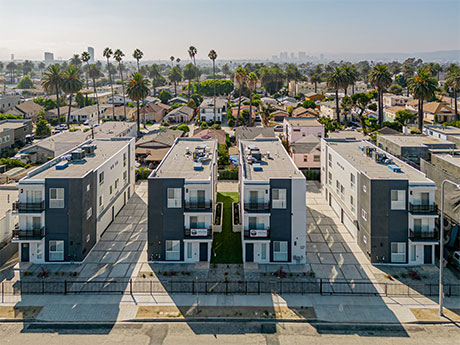After years of strong growth in property values and rental rates, momentum in the housing market is beginning to slow. Growth is stagnating across the country, and values in some markets are slipping.
This shift has caused some investors to hold off on acquiring additional real estate holdings as we go into 2023. However, some multifamily investors are seeking unconventional opportunities to ensure annualized returns, such as co-living models.
The Rise of Co-Living
According to iPropertyManagement, an online informational database which provides resources for landlords, the average rent price nationwide has increased 8.85 percent per year since 1980, consistently outpacing wage growth and creating financial strain for renters. To make rent more affordable, more renters are opting for co-living, splitting the rent with multiple roommates in larger apartments.
These renters quickly run into a few problems, however. First, most rentals offer only one or two bedrooms. In fact, around 65 percent of the nationwide apartment inventory has two bedrooms or fewer, according to a 2020 study conducted by Harvard University on rental housing. With the high cost of two-bedroom units, splitting the rent with only one other roommate may not reduce the per person rent to an affordable rate.
The second issue is that many of these apartments are designed for couples and small families. They have one primary bedroom (with an en-suite bath if you’re lucky) and then a noticeably smaller bedroom. In many cases, bathrooms are shared. This is clearly less than ideal for a roommate situation.
Now imagine a four-bedroom apartment with all four rooms being around the same size and each room coming with its own en-suite bath. This unit could comfortably accommodate four roommates, and by splitting the rent four ways, the rent per person becomes much more affordable. This in-demand floor plan would bring low vacancy, year-over-year rental increases, and happy residents.
Using Zoning to Ease the Housing Shortage
Single-family zoning laws, such as those in California, have been a key contributing factor to the housing shortage. Single-family zoning allows for only one household per lot. This limits the number of dwellings that can be built in a given area, creating sprawling cities with excessive commute times and limitations on building new multifamily structures.
Across the United States, recent zoning law changes have made it possible to build multifamily properties on lots that were previously zoned as single-family. This allows developers to build more units in less space, which creates more housing in central areas, where it is needed most.
Rather than taking years to find and grade a sizeable piece of land for a large apartment building, a developer could purchase distressed single-family homes in growing neighborhoods and demolish those homes to make way for smaller multifamily buildings of four to 10 units. This dramatically reduces the time spent locating suitable properties and getting permits approved, resulting in bringing in-demand units to market sooner.
Keeping Investors in Mind
Satisfying renter demand is a critical element of successful multifamily development. However, it is just as important to meet the bottom-line needs of the property owner when designing and building a new multifamily project.
Whether you are building to rent or sell the property to an investor or buyer, it is crucial to be mindful of the challenges and economic realities of the current multifamily market.
Take maintenance, for example. High-maintenance amenities such as elevators, pools and fitness centers can create expensive headaches for property owners. These amenities can also require higher rental rates, which decreases buyer interest. But low-maintenance amenities like parking areas, rooftop decks and in-unit washers and dryers boost the value of the property without requiring much from the owner. Focusing on low-maintenance amenities keeps profit margins higher.
The size of the development is also a strategic decision. By constructing smaller buildings, you can appeal to a wider range of buyers if you decide to sell the asset. This means greater buyer demand, a faster sale and a quick payout for investors. A larger building, on the other hand, can provide greater ROI per unit for the buyer, but your buyer pool would be limited to those with the means to purchase such a development.
Bringing Opportunity to Individual Investors
Investing in multifamily developments has traditionally been reserved for large institutions. The cost of building a multi-unit structure created a natural barrier to entry for all but the wealthiest investors.
But in 2012, the JOBS Act provided the legislative change that made it possible for the public to contribute to this type of investment through crowdfunding. This opened the door for individual investors to come together to finance a multifamily development that would have otherwise been unattainable, laying the groundwork for “real estate syndication,” which brings a stable ownership structure to crowdfunded deals.
Syndication is an elevated form of crowdfunding in which each investor is made a member of the limited liability company or Trust that owns the asset. This ownership structure allows investors to own a stake in the underlying real estate, as opposed to simply owning a stake in the debt financing of the property.
Through real estate syndication, investors get all the benefits of traditional multifamily investing: instant equity from the construction phase, passive income from incoming rents, long-term appreciation, and tax advantages.
Syndication also offers access to higher-value deals with low minimum investments by spreading the upfront financing across multiple investors. Real estate syndication can help multifamily investors take advantage of co-living opportunities by leveraging the knowledge, skill, and systems of experienced developers to maximize potential returns in the emerging co-living niche.
— Josefin Gatsby, Gatsby Investment


